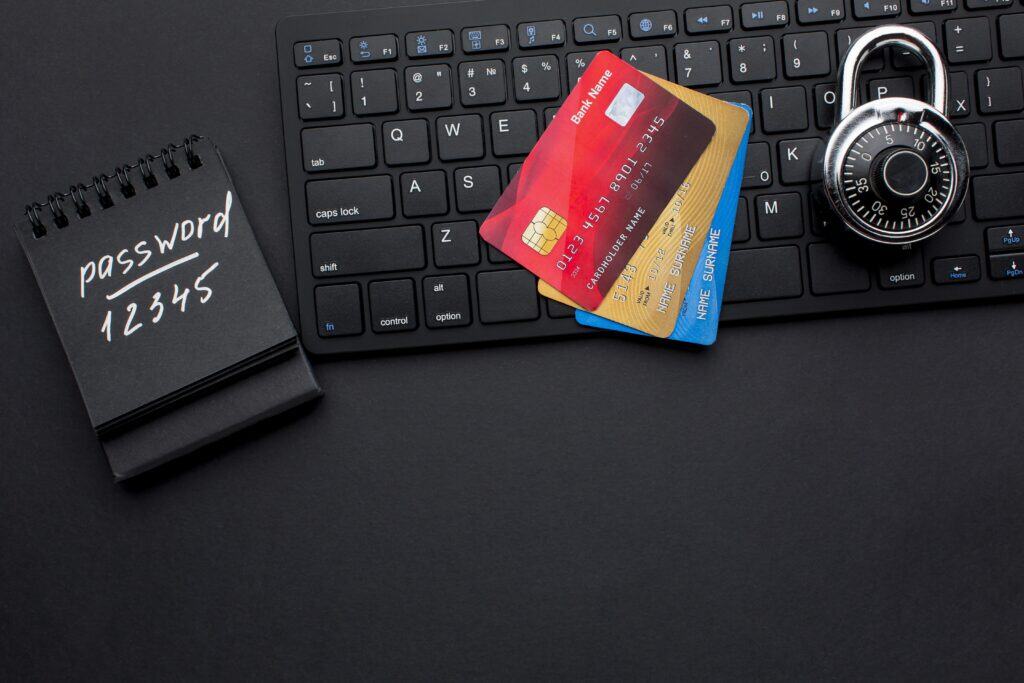
By Terri Humphrey June 12, 2025
Tattooing has long been an art form rooted in personal expression. Over time, it has also evolved into a premium service industry. With custom tattoos often costing hundreds or even thousands of dollars, payment methods and security protocols have become just as important as the artistry itself. High-value tattoo sessions demand more than just creative skill. They require a professional approach to managing payments in a way that is both secure and convenient for the client and the artist.
Tattoo studios and independent artists are increasingly faced with the challenge of creating a seamless financial experience while also protecting themselves from fraud, disputes, and administrative errors. In many cases, a tattoo appointment may require multiple hours or multiple sessions, which adds to the complexity of handling payments correctly.
Understanding the Financial Stakes of High-Value Sessions
Tattoo sessions priced above a certain threshold involve far more than just the cost of ink and time. Full sleeves, back pieces, and intricate body designs often represent a significant financial and emotional investment for the client. For the artist, they require careful planning, extensive design work, and consistent communication. This elevated experience should be matched with a professional approach to payments.
When dealing with large transactions, the risks increase. Payment delays, chargebacks, and even theft can cause real financial damage. On the other hand, overly complicated or rigid systems may frustrate clients and discourage them from following through with bookings. That is why payment security and convenience must be considered together.
Clients paying large sums expect to feel reassured. They want to know their money is safe and that their payment is being used toward a reputable, well-managed service. Artists, too, need the confidence that their work will be compensated fairly and without unnecessary stress. These dual needs highlight the importance of finding a solution that works for both parties.

Choosing Secure and Flexible Payment Platforms
The foundation of a safe and convenient payment system lies in selecting the right platform. For high-value sessions, relying solely on cash can be risky. It exposes both the artist and client to potential loss or dispute. Digital payment platforms offer more accountability, and many now include features designed specifically for service-based businesses.
Platforms such as Square, Stripe, and PayPal provide encrypted payment processing, fraud detection, and clear transaction logs. These platforms also generate digital receipts, which clients can keep for personal records. For the artist, it means proof of payment is always accessible and trackable.
Some tattoo studios also use point-of-sale systems that integrate booking and billing. This helps ensure payment is directly tied to the appointment schedule, reducing the chance of confusion or overbooking. These tools also offer payment link options that can be sent ahead of time, allowing clients to pay a deposit or the full amount before they arrive.
Flexibility is another important aspect. Clients may prefer to pay with a credit card, debit card, or even digital wallets like Apple Pay. By offering multiple secure options, tattoo artists make the payment experience smoother and more accommodating to diverse client preferences.
Using Deposits to Build Trust and Mitigate Risk
Deposits are one of the most effective ways to manage financial security for high-value tattoo sessions. They act as a commitment from the client while also protecting the artist from last-minute cancellations or no-shows. For expensive or multi-session tattoos, deposits can be tiered based on total cost or time commitment.
A deposit policy should be clearly stated at the time of booking. It should explain the deposit amount, refund terms, and what happens in the event of rescheduling. These terms should also be available in writing or included in the booking confirmation.
For large projects, many artists use installment payments where clients pay in stages as the work progresses. This approach offers greater flexibility while still ensuring that each part of the process is financially covered. Installments also provide a manageable payment path for the client, who may not be able to pay the full amount upfront.
Using secure payment platforms for deposit collection also improves accountability. Clients receive confirmation and a digital receipt, while artists have a verifiable record of the transaction. This transparency minimizes misunderstandings and creates a smoother working relationship.

Protecting Against Chargebacks and Fraud
One of the most significant risks associated with high-value services is the possibility of a chargeback. A chargeback occurs when a client disputes a charge with their bank or card provider. In some cases, the reason is valid. In others, it can be a case of buyer’s remorse or even intentional fraud.
To reduce the risk of chargebacks, documentation is essential. Tattoo artists should maintain detailed records of the agreement, including emails, consent forms, design previews, appointment confirmations, and proof of services rendered. Photos of the tattoo in progress and upon completion can also be helpful.
Clear communication before, during, and after the session plays a crucial role. Clients should understand the pricing breakdown, what is included in the cost, and when payments are due. When clients feel informed and involved, they are less likely to dispute charges.
In the event of a chargeback, the payment processor will often request supporting documentation. Having this ready improves the chance of a successful dispute resolution in favor of the artist. Some platforms also offer chargeback protection services, which can reimburse part of the amount lost in eligible cases.
Ultimately, fraud prevention is about preparation. Having consistent policies, using secure systems, and creating transparency with clients builds a layer of defense against unwanted financial loss.
Simplifying the Payment Process for Clients
While security is critical, clients also value simplicity. The ideal payment system should not feel burdensome or overly technical. This is especially important when the total cost is high, and the client is already emotionally and financially invested.
One way to simplify payments is to offer pre-payment options. This can include links sent via text or email that allow the client to pay securely from their phone. These links can be timed to send reminders a few days before the session, reducing the need for awkward conversations at the studio.
In-person terminals also enhance convenience. Many studios now use mobile card readers that support chip, swipe, and contactless payments. These devices are easy to set up and can be connected to scheduling software to sync appointments with payment records.
Offering receipts via text or email adds another layer of convenience. Clients appreciate having a digital trail, especially for high-value services. It also makes it easier to reference past appointments or confirm deposits for future sessions.
The overall goal should be to create a process that feels seamless. From the moment a client decides to book a large tattoo to the final touch-up session, every payment interaction should reflect professionalism and ease.
Building Clear Policies Around Refunds and Rescheduling
Clarity around refunds and rescheduling is essential for any service business, but it becomes even more critical when the transaction value is high. Clients should know in advance what happens if they cancel, change their mind, or are unhappy with the results.
A refund policy should be presented during the booking process and reinforced in the confirmation message or agreement. If refunds are not offered for completed services, this must be clearly stated. If partial refunds are available under specific conditions, those conditions should be defined.
Many tattoo artists choose not to offer refunds once work has started, especially for custom designs. However, some allow for rescheduling within a specific timeframe if the client provides advance notice. These kinds of flexible but structured options give clients peace of mind without putting the artist at risk.
It is also helpful to create a standard operating procedure for handling refund or complaint requests. This ensures each case is handled consistently and fairly, and reduces the chance of emotional or subjective responses.
Transparency here is not just about protecting income. It is about creating trust. When clients feel informed and respected, they are more likely to continue the relationship even if issues arise.

Educating Clients on Payment Security
Clients are not always aware of the risks involved in high-value transactions, nor do they always understand the safeguards artists have in place. That is why education is a subtle but important part of maintaining a secure and convenient payment system.
Without being overly technical, studios can use booking pages, confirmation emails, and in-studio signage to explain how their payment systems work. This can include a short message about deposit policies, data protection, accepted payment methods, and refund terms.
Letting clients know that their information is encrypted, that they will receive receipts, and that there is a clear support path if anything goes wrong can improve their comfort level significantly. It also sets the tone that the studio takes its responsibilities seriously.
This kind of proactive education prevents many of the issues that lead to disputes or dissatisfaction. It also positions the artist as a professional service provider, not just a creative technician.
Balancing Flexibility with Professional Boundaries
In the pursuit of convenience, it can be tempting to say yes to every client request. But for high-value services, boundaries are necessary to maintain control and avoid unnecessary risk. Flexibility should exist within a structured system.
For instance, while it is fine to offer payment plans or extended scheduling, each option should have a written agreement attached. Letting clients pay in installments should not mean abandoning due dates or waiving deposits.
Similarly, it is okay to work with clients who face financial hardship, but those exceptions should be handled with care. Written acknowledgment, updated agreements, and timeline adjustments ensure that even flexible plans remain enforceable.
Striking this balance helps the artist maintain professionalism without losing the human side of customer service. Clients will appreciate the willingness to work with them, but they will also respect the structure that keeps everything running smoothly.
Conclusion
High-value tattoo sessions bring unique financial dynamics that go beyond the ordinary. Artists are not just creating meaningful, lasting work. They are also managing significant transactions that require foresight, security, and clarity.
By choosing the right payment platforms, enforcing clear policies, and fostering open communication, tattoo professionals can create a payment experience that feels both secure and easy for the client. This balance is essential not just for smooth transactions, but for building long-term relationships and a reputation for professionalism.
As the industry continues to grow and clients become more discerning, the way payments are handled will become a key differentiator. Tattoo artists who invest in secure, transparent, and user-friendly systems will be better positioned to thrive in a competitive and evolving market.